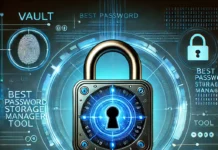Among the many types of digital threats lurking online, phishing is one that you should not ignore. It can strike at any time, and the worst part is that it might leave you compromised for a very long period until you even realize something is wrong. Basic phishing attacks are already bad enough, but a well-crafted and specifically targeted one can be very effective.
Major corporations keep falling for phishing attacks every day, so don’t make the mistake of thinking that you’re safe. The worst part is that phishing relies largely on the element of human error. This means that no matter how many layers of digital security you might have, you can still get compromised by someone making one wrong move.
Basic Concepts of Phishing

A phishing attack attempts to fool you into giving away your credentials for a specific website or a service. It usually goes something like this:
- You receive an email from your bank, telling you that something is wrong with your account.
- Then you click the link provided in the email and log in to your account.
- You don’t see anything actually wrong, so you just close the website and forget about it, thinking that it was probably a system error.
What really happened: your bank never contacted you at all. The message you got was from an attacker, and it was designed to copy the standard email format used by your bank. The link took you to a site that looks identical to the one used by your bank but is controlled by the attackers.
When you entered your credentials, you were redirected to the real website of the bank, while the thieves got a copy of your login details.
Phishing always relies on fooling you into visiting a malicious website. It can sometimes be very difficult to spot. It’s also not rare for attackers to target specific people or organizations, which can make detection even more challenging.
From Basic to Sophisticated Attacks
What we described above is a simple, straightforward phishing attack. It has many weak points that can be used to identify it. For example, the sender’s e-mail will often look nothing like the one from your actual bank.
The links in the message will also lead to a completely different domain name. Spelling errors are common in phishing attacks too, as is referring to you as “dear customer”, instead of using your actual name.
But with a crafty attacker, things can get scary. Email addresses can be spoofed, and links can be routed through shorteners to make them seem more legitimate.
A phishing attack doesn’t even need to come through email in the first place. You may be contacted over IM, and the attacker might take the time to study your profile and reference specific details about your life.
Tips for Staying Safe

With all that in mind, how does one stay safe from phishing attacks? Here are a few tips to get you started:
- Never click on links in suspicious emails. If it claims to be from your bank, type the address yourself.
- Avoid links that use URL shortener services unless you trust the source.
- Always use a Virtual Private Network to keep your connection safe and encrypted from attackers who might be listening in. NordVPN is a great provider; its CyberSec feature is especially helpful when dealing with phishing attacks – it automatically blocks suspicious websites. Just read the detailed NordVPN review, and you’ll see that using it is quite simple, straightforward, and user-friendly.
- Be wary of social engineering attacks. Don’t be afraid to get a little rude if a person refuses to identify themselves when requesting something from you. Don’t hesitate to drop the entire conversation either.
- Keep your antivirus, operating system, and all the apps you’re using up to date. Phishing relies mostly on the element of human error, but this doesn’t mean that it’s not useful to ensure that you’re not vulnerable to any digital/Virus attacks.
Most importantly though: never succumb to panic. This is the one thing that attackers rely heavily upon.
Creating a sense of urgency is important because it will make you more careless and prone to ignoring some major red flags. With that in mind, make sure that you double-check everything when you get a suspicious or scary message.
And if you’re wondering when is a good time to familiarize yourself with these things – the answer is now. Things are only going to get scarier in the future.
Digital attacks are becoming more and more sophisticated, and knowing how to anticipate and avoid them is going to be critical for your safety in the long run.



















So kind of you. Thanks A lot for this detailed guide on torrenting! The content is so well posed. The subject is very cleared and understandable.